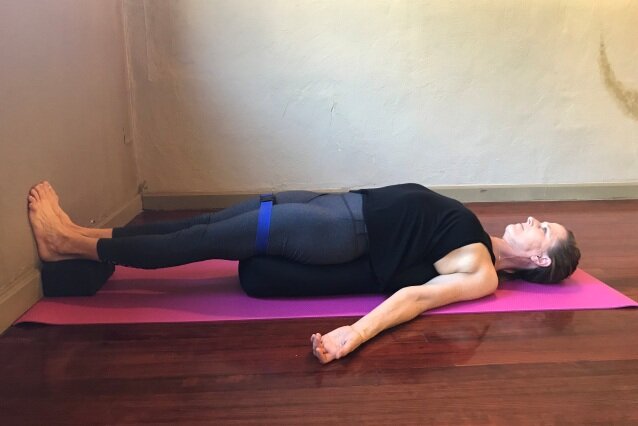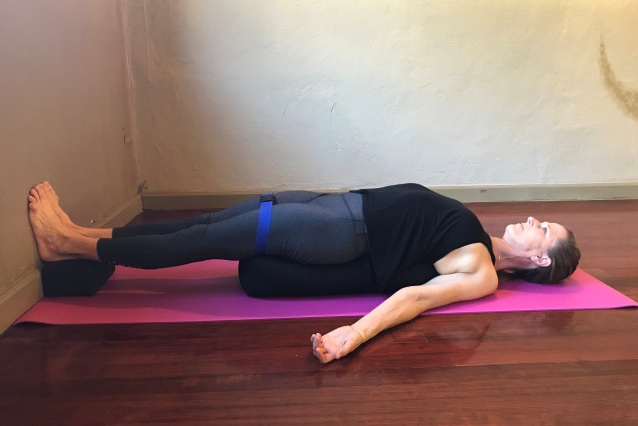And all you have to do is lie there! This supported pose is a precursor to Shoulderstand. Setu Bandha Sarvangasana benefits all of the systems of the body so you can recover your health. It reduces fatigue by draining fluids from the legs after long periods of standing. Athletes find it beneficial after a long run to help reduce soreness in the leg and hip muscles. This pose also helps to relieve headaches or mental agitation which are often symptoms of over work.
Set up: place your mat with the short edge against the wall. You will need a bolster, two blocks and a belt. Place the blocks at the wall for your heels to rest on. Place the bolster lengthwise on your mat. In this pose you want your heels on the wall, the bolster under your torso and your shoulders on the floor.
Technique: Place your belt around the middle of your thighs. It should be snug. Sit on the edge of the bolster closest to the wall. Have your knees bent and your feet on the wall. Lie back over the bolster and let your head hang over the far end. Keeping your back down on the bolster, push into the wall with your feet and allow the bolster to pull down on the skin of your upper back as you slide off the edge of the bolster. You may have to do this a couple of times to get the exact measurement. You want to have your entire foot pressing into the wall. The bolster should reach up to the bottom tips of your shoulder blades and it lifts your chest, but your head and shoulders should be resting on the floor. Having your thighs belted will keep the legs resting in a parallel position without exerting any effort. Take a good look at the picture to get all of the alignment points correct.
You can rest here for anywhere from 5 to 20 minutes. When you are finished, roll over off of the bolster and rest on your side for a few breaths before coming up. You can practice this pose everyday if you’d like. If you want it to work on helping to open your shoulders, you’d have to practice it at least 3 or 4 times a week.
If you back hurts during or after, the bolster was too thick. Either use a thinner bolster or a folded blanket, or support your head and shoulders with a blanket.


